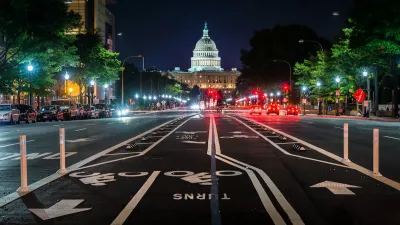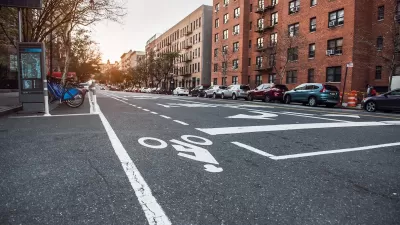Explore how walkability grants are transforming cities into pedestrian-friendly environments, enhancing urban livability, boosting local economies, and improving public health.

Cities are epicenters for employment, entertainment, better health services and higher living standards, yet not every location is pedestrian-friendly. Walkability grants have enabled leaders to invest in public areas, improving citizens’ safety and decreasing reliance on transportation. Here’s how these specialized grants are transforming communities across America.
Walkability grants are changing the landscape
Walkability grants are awards for programs and projects creating innovative pedestrian infrastructure, such as new sidewalks, crosswalks, plazas, street lights and green spaces. For example, in February 2023, the Biden-Harris Administration announced the Safe Streets and Roads for All Grant Program, delivering $800 million in monetary awards for 511 projects addressing public safety and road improvements.
Additional walkability grants include those from the federal-backed Transportation Alternatives Program for enhanced biking lanes, awards from state and local governments, nonprofit funding, and private partnerships. Access to multiple grant opportunities is essential for achieving program goals, especially since some are highly competitive with lengthy application processes. In fact, 22 percent of grant seekers say this is one of the most significant funding challenges.
Benefits of walkable cities
Reshaping the built environment into a walkable haven helps boost the local economy and sustainability. By changing the urban landscape, citizens are more inclined to walk instead of drive, allowing cities to reduce emissions, improve air quality and create healthier neighborhoods. This is critical, considering air pollution is responsible for 7 million early deaths yearly.
Per one study, car travel accounts for 70 percent of mobility-caused carbon dioxide (CO2) emissions for one individual, compared to 1% for biking. Lead researcher Dr. Christian Brand says if just 10 percent of the population biked instead of driving, they could save 4 percent of life cycle CO2.
Walkability is also good for business. According to American Walks, retailers in walkable areas see a 40 percent increase in foot traffic, while a one-point higher Walk Score corresponds to a $500 to $3,000 rise in home values.
Case studies of successful walkability initiatives
Nationwide, cities have implemented pedestrian infrastructure through funding efforts. Here are three examples of walkability grants in action.
New York City
NYC has made strides in improving walkability, from expanding sidewalks to creating designated bike lanes and developing gathering places with enhanced lighting, seating and landscaping.
Most notable is the High Line — an elevated park over the former New York Central Railroad along Manhattan’s West Side. With 13 access points between Gansevoort Street and West 34th Street, New Yorkers can enjoy a 1.45-mile stretch of nature and design. In March 2024, NYC Mayor Eric Adams also announced $123.6 million in federal grants to fund several community projects, including converting an abandoned rail line into a park with over a mile of paths for walkers and cyclists.
Seattle, Washington
For years, Seattle has worked tirelessly to expand its walkability, making key improvements to sidewalks, bike lanes, crosswalks and transit connectivity. In 2016, the city reduced speed limits along residential streets from 30 miles per hour (mph) to 25 mph, resulting in a 17 percent lower risk of collision injuries downtown.
Seattle is also adding walking paths. Although there are 2,000 miles of sidewalks throughout the city, 11,000 blocks are without. The Levy to Move Seattle program utilizes federal and state walkability grants to construct 25 blocks of sidewalks annually in high-foot-traffic areas with frequent transportation services.
Minneapolis, Minnesota
Minneapolis is focused on pedestrian-friendly initiatives to boost walkability, such as improving sidewalks, enhancing intersection safety with new traffic signs and lights, promoting mixed-use developments, and enhancing winter walkability. The city recently launched a $30 million revitalization project to create a half-mile pedestrian corridor downtown. The goal is to increase enjoyment and accessibility for people to take advantage of entertainment and amusement.
About $2 million of funding will come from federal grants. Officials also hope to create green spaces, better lighting, new pavement markings and stormwater infrastructure, which will mainly benefit low-income residents, renters and people of color in the surrounding neighborhoods.
Walkability grants a catalyst for change
Walkability grants have allowed cities to invest in pedestrian infrastructure, designing healthier and happier communities for the future. As some initiatives have already proved, when residents and visitors have access to safe, connective paths, it results in improved physical activity, less pollution and more robust economies.

Planetizen Federal Action Tracker
A weekly monitor of how Trump’s orders and actions are impacting planners and planning in America.

Congressman Proposes Bill to Rename DC Metro “Trump Train”
The Make Autorail Great Again Act would withhold federal funding to the system until the Washington Metropolitan Area Transit Authority (WMATA), rebrands as the Washington Metropolitan Authority for Greater Access (WMAGA).

The Simple Legislative Tool Transforming Vacant Downtowns
In California, Michigan and Georgia, an easy win is bringing dollars — and delight — back to city centers.

The Small South Asian Republic Going all in on EVs
Thanks to one simple policy change less than five years ago, 65% of new cars in this Himalayan country are now electric.

DC Backpedals on Bike Lane Protection, Swaps Barriers for Paint
Citing aesthetic concerns, the city is removing the concrete barriers and flexposts that once separated Arizona Avenue cyclists from motor vehicles.

In These Cities, Most New Housing is Under 441 Square Feet
With loosened restrictions on “micro-housing,” tiny units now make up as much as 66% of newly constructed housing.
Urban Design for Planners 1: Software Tools
This six-course series explores essential urban design concepts using open source software and equips planners with the tools they need to participate fully in the urban design process.
Planning for Universal Design
Learn the tools for implementing Universal Design in planning regulations.
Smith Gee Studio
City of Charlotte
City of Camden Redevelopment Agency
City of Astoria
Transportation Research & Education Center (TREC) at Portland State University
US High Speed Rail Association
City of Camden Redevelopment Agency
Municipality of Princeton (NJ)






























